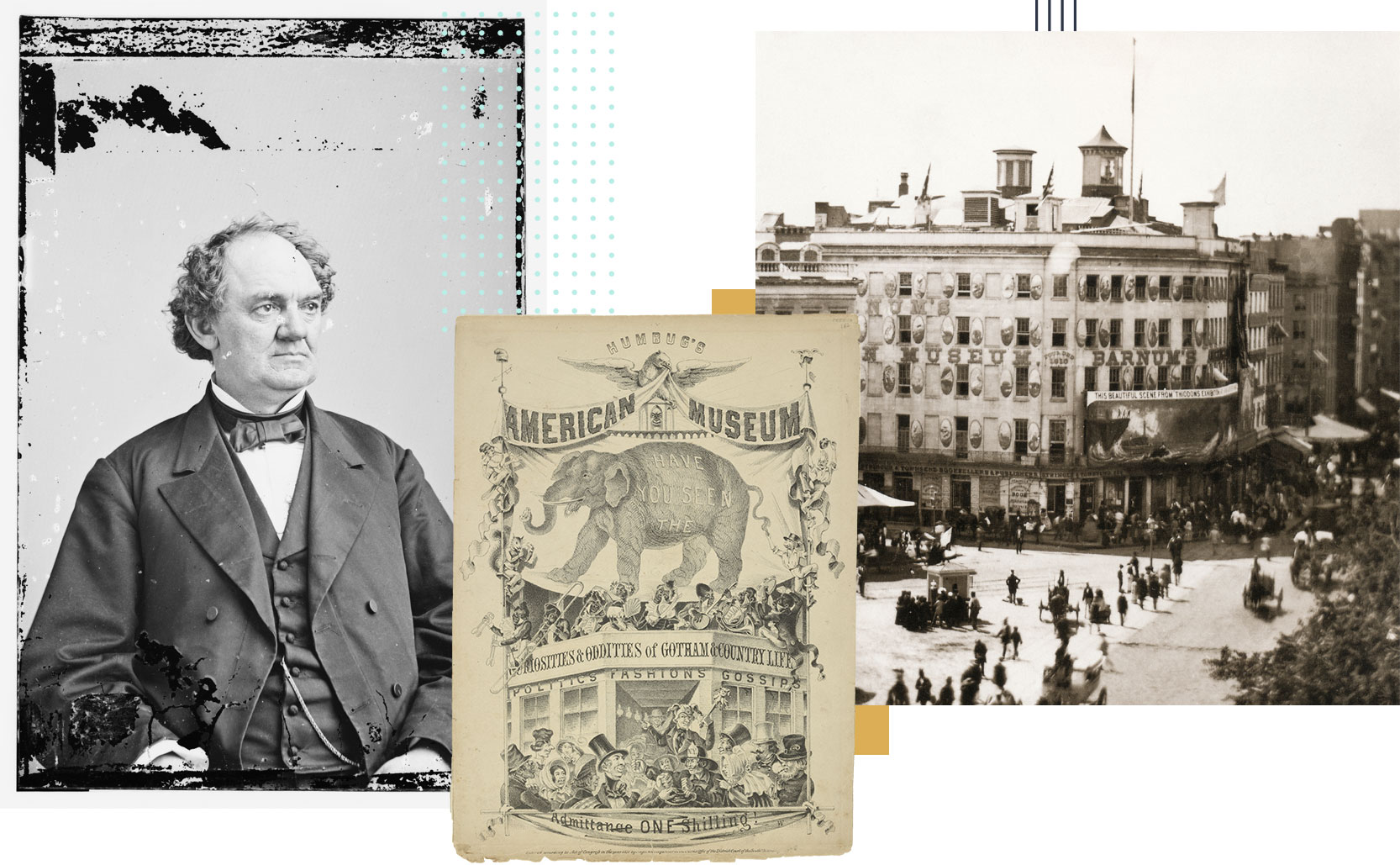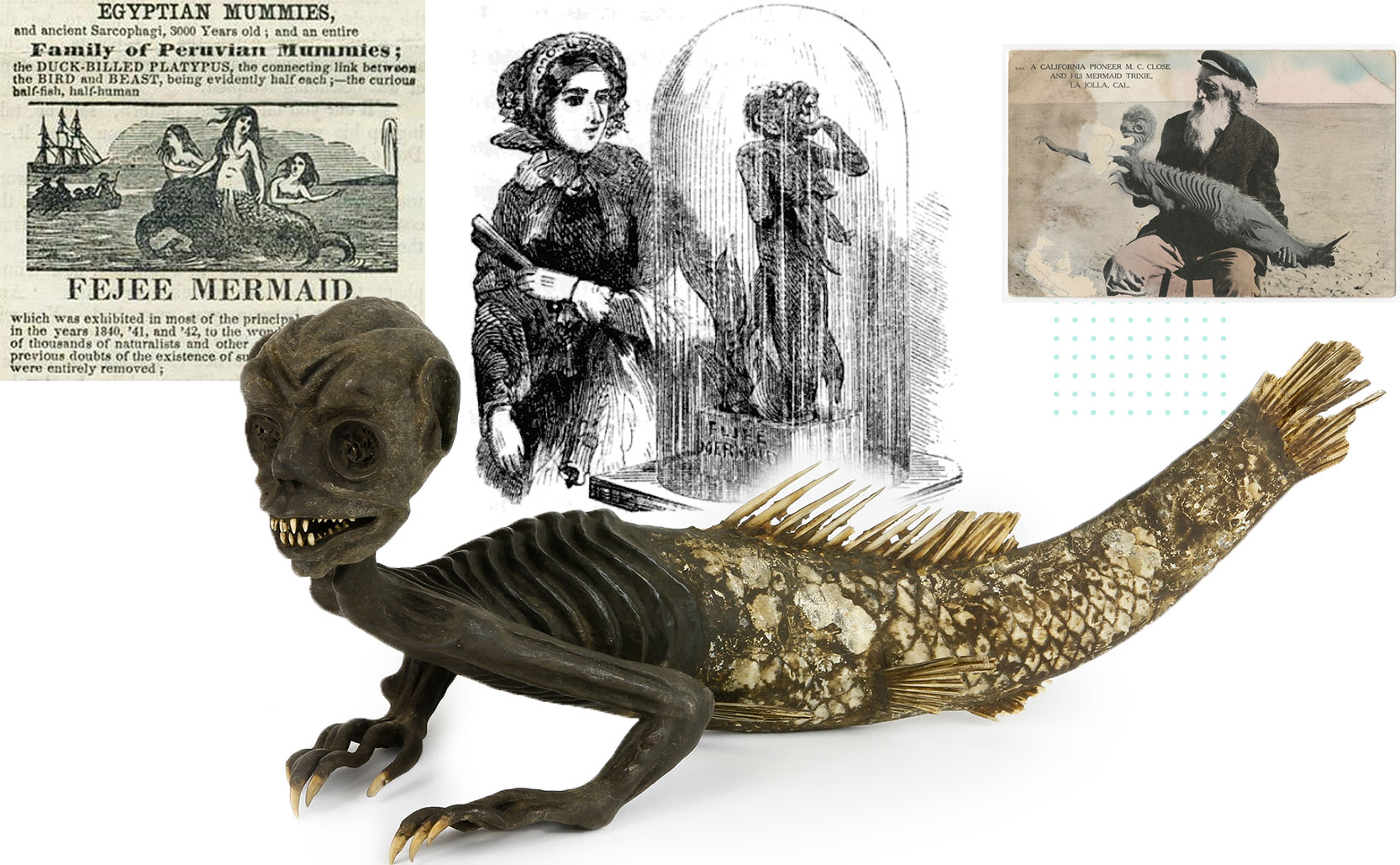Fiji Mermaid
The taxidermy oddity that attracted thousands of people to P.T. Barnum’s American Museum.
In 1841 P.T. Barnum opened his American Museum in New York City. For 31 years the museum had been Scudder’s American Museum which was part science museum, part zoo, part history museum, and part collection of oddities. After Barnum bought it he took these ideas and amped them up to become one of the most popular attractions in America. With around 500,000 items in the collection the museum was both educational and entertaining – it was history and spectacle. Over its 14 year run the Barnum American Museum had 38 million customers at a time when the population of the US was only around 32 million.
Being a P.T. Barnum enterprise, marketing was a critical tool to its success. He transformed the facade of the building into a giant billboard for the museum itself. He had posters advertising (and exaggerating) the attractions inside. One of the first attractions he marketed, using most of the front of the building to do so, was the Fiji mermaid.

The Little Mermaid
The Fiji mermaid was brought to America in 1842 by Dr. J. Griffin of the British Lyceum of Natural History. It was the mummified remains of a mermaid from the Fiji islands in the South Pacific. Barnum generated interest in the mermaid by sending anonymous letters to various newspapers talking about it. He even cooked up a story that he was trying to convince Dr. Griffin to exhibit the mermaid and that Griffin was reluctant. It was a sensation before it was ever even exhibited to the public.
Barnum negotiated to display the mermaid for one week but it proved to be so popular that it went on the road, touring southern states. Dr. Griffin gave lectures about mermaids and cited the ancient Greek idea that everything on land had a counterpart in the sea. At a time when new species were being discovered in the remote areas of the world perhaps a mermaid had finally been found.
Eventually the Fiji mermaid split its time between Barnum’s American Museum and the Boston Museum. Its fate is unknown as it went missing but it was most likely destroyed in either the fire that consumed Barnum’s museum in 1865 or the fire that consumed the Boston Museum in 1880.

A sucker born every minute
In truth, the “mermaid” was Barnum’s first hoax at his American Museum (his very first hoax was when he exhibited Joice Heth, a woman he bought, and claimed she had been George Washington’s former nurse … which she hadn’t been). At about 3ft long the mermaid was the taxidermy combination of a monkey torso and the tail of a fish (most likely a salmon). Far from being the beautiful humanoid mermaid seen in Barnum’s advertisements, it was a ghastly animal mashup. The Charleston Courier wrote that “… the Feejee lady is the very incarnation of ugliness.”
Instead of originating in the Fiji islands, the mermaid actually was one of many created by Japanese fishermen. This particular mermaid was bought by the American sea captain Samuel Edes in 1822 whose son sold it to Moses Kimball of Boston in 1842. Kimball then leased the mermaid to Barnum for his museum. As for Dr. J. Griffin, he was actually Barnum’s associate Levi Lyman who was in on the ruse from the very beginning, pretending to vouch for the mermaid’s authenticity. Also there’s no such thing as the “British Lyceum of Natural History”. Nothing about the Fiji mermaid was real except the public’s excitement.
Humbug
There is a Barnum-esque blurry gray area between “hoax” and “entertaining joke”. While Barnum liked to categorize things like the Fiji mermaid as “humbugs” (which are things designed to deceive), he felt they were always in playful fun. Barnum wanted the audience, even when deceived, to still have a good time. He did not like deception at the expense of the public. For example he spoke out publicly (and testified in court) against spiritual mediums who tricked people out of money, lying to them about communicating with deceased loved ones.
Over the years numerous other Fiji mermaids have made the rounds in museums, curiosity shops, sideshows, and private collections. They’re made from all manner of materials (animal parts, wood, papier-mâché, wire, plastic, etc). You can find higher-quality ones for sale in shops that specialize in curious objects, but there are also cheaper ones on ebay. You can also learn to build your own.
Added info: The Jenny Haniver is a related taxidermy hoax. It’s a sea animal, frequently a ray or skate, that’s been modified to look like the mummified remains of a demon, angel, basilisk, etc.
Also, P.T. Barnum never said “There’s a sucker born every minute.” It was said by banker David Hannum who had purchased a hoax giant which he charged the public to see.


